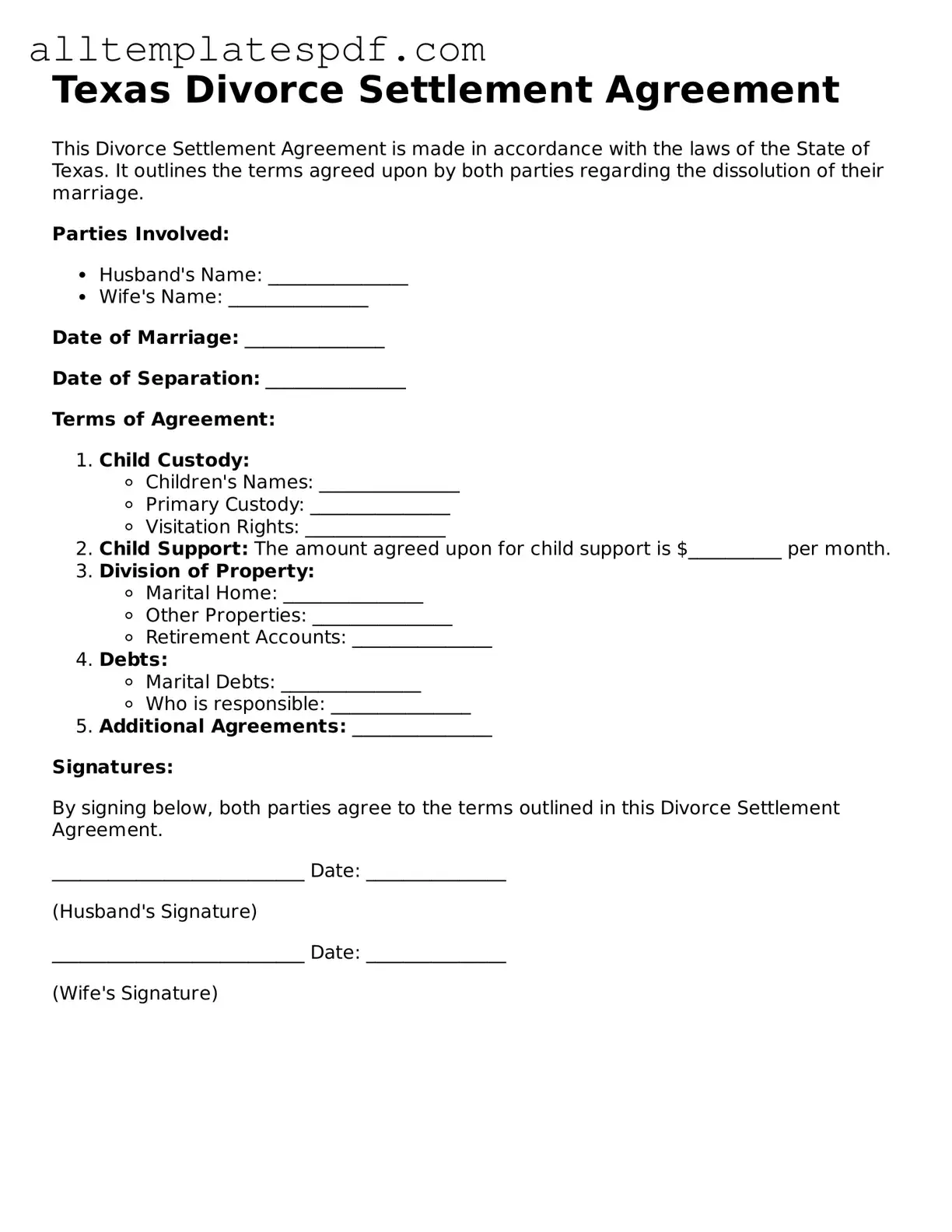Blank Divorce Settlement Agreement Template for the State of Texas
The Texas Divorce Settlement Agreement form is a legal document that outlines the terms agreed upon by both spouses during a divorce. This form covers important aspects such as property division, child custody, and support arrangements. Understanding and completing this form is crucial for a smooth divorce process; start filling it out by clicking the button below.
Open Editor
